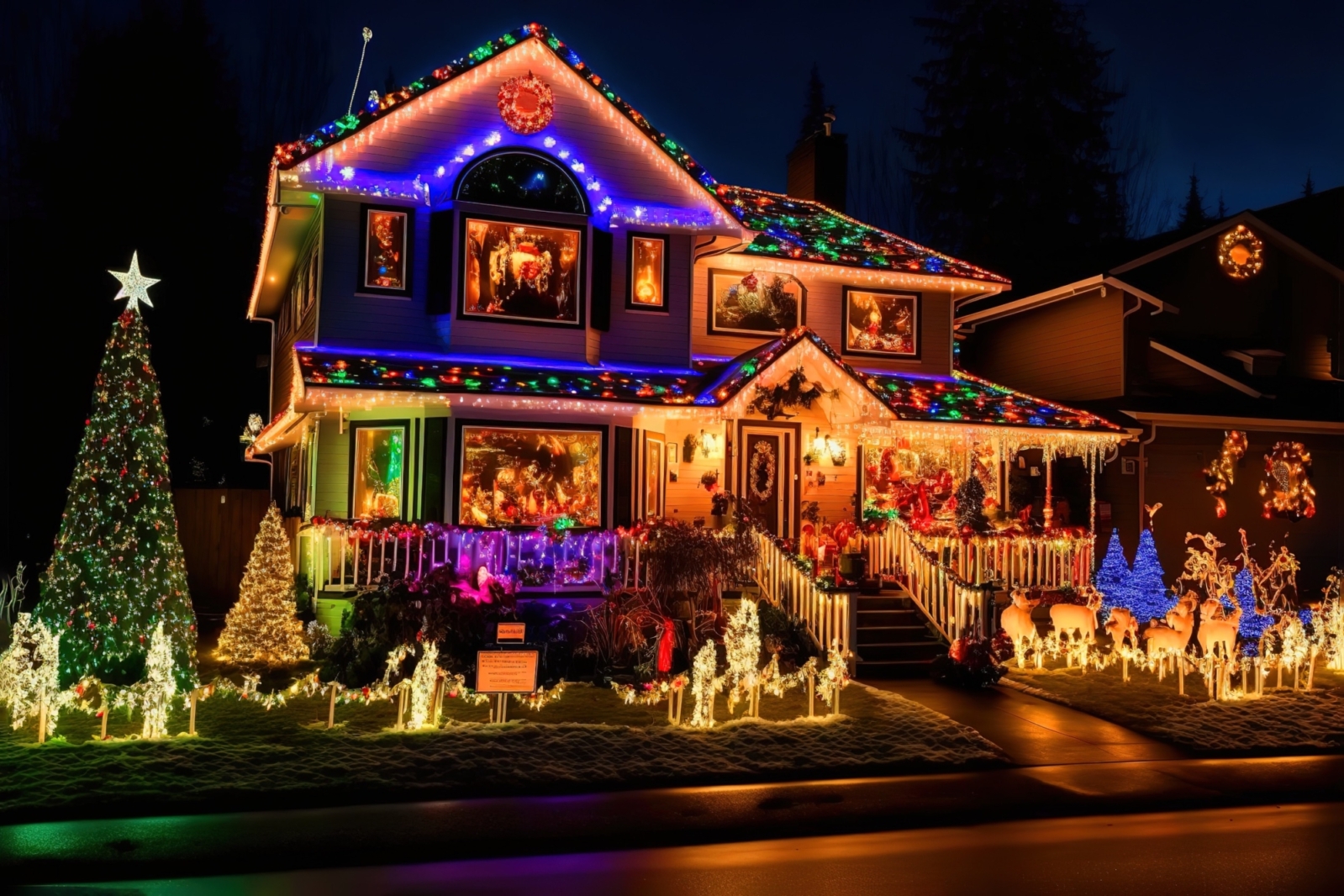The Bright Side of Christmas Light Safety: Debunking Myths and Staying Safe

As the festive season arrives, homes across the country transform into dazzling displays of holiday cheer. Christmas lights, with their twinkling brilliance, impart a magical aura to the surroundings.
However, amid the joy and splendor, concerns about safety often arise, especially regarding whether these radiant decorations have the potential to cause fires due to their heat.
The fears surrounding Christmas light safety are not entirely unfounded. Every year, reports of fire incidents linked, in part, to improper use of holiday lights remind us of the importance of using caution when transforming our homes into a winter wonderland.
Moreover, misconceptions and myths about Christmas light safety are rampant, leading to confusion and needless worry. These myths range from the outright absurd - such as the belief that Christmas lights attract electricity - consuming entities - to the more plausible, yet equally false notion that LED lights can't overheat.
In this article, we aim to debunk these myths, shedding a much-needed light on the facts of Christmas light safety. By understanding the truth and following best practices, we can ensure a holiday season that is not only merry and bright, but also safe.
Let's explore the science behind Christmas lights, their heat emissions, and the actual risks they pose.
The Anatomy of Christmas Lights
Modern-day Christmas lights come in various types, from traditional incandescent bulbs to more energy-efficient LED (Light Emitting Diode) lights. Understanding the components of these lights is essential to grasp their heat output.
Incandescent Lights
These lights work by passing electricity through a wire filament, causing it to heat up and emit light. Incandescent bulbs produce a considerable amount of heat while glowing, potentially making them warmer to the touch.
LED Lights
LED lights, on the other hand, operate differently. They produce light by the movement of electrons within a semiconductor material. Compared to incandescent bulbs, LEDs generate significantly less heat and are generally cool to the touch, even after extended use.
Debunking the Myth: Can Christmas Lights Cause Fires?
Concerns about Christmas lights causing fires largely stem from the heat generated by incandescent bulbs. These bulbs can indeed become hot during operation, but the risk of them starting a fire is relatively low if used correctly and maintained properly.
The safety of Christmas lights primarily depends on several factors.
Quality of the Lights
Ensuring the lights are of good quality and conform to safety standards significantly reduces the risk of malfunction or overheating.
Proper Usage
Following manufacturer instructions, including not overloading electrical circuits, using the correct wattage, and inspecting lights for damage before installation, minimizes potential hazards.
Duration of Use
Limiting the continuous use of lights, especially incandescent ones, can prevent excessive heating. LED lights, due to their low heat emission, offer a safer option for longer durations.
Understanding the Risks and Precautions
While Christmas lights themselves may not inherently cause fires, certain risk factors warrant attention.
Overheating
Prolonged use or improper installation, such as using damaged cords or leaving lights on for extended periods without supervision can lead to overheating and potentially pose a fire risk, especially with older incandescent lights.
Electrical Issues
Overloading electrical outlets, using damaged extension cords, or connecting too many strings of lights together can cause electrical faults and increase the risk of fire.
Addressing Safety Concerns
Let’s talk about some of the safety concerns that should be addressed to ensure a safe and enjoyable holiday season.
Choose Wisely
Opt for LED lights whenever possible, as they emit less heat and are more energy-efficient. Ensure all lights meet safety standards and are in good condition before use.
Installation Matters
Avoid overloading circuits or using damaged wires. Follow manufacturer guidelines for the maximum number of lights that can be connected together.
Regular Inspection
Periodically check lights for any signs of damage or wear. Replace any worn-out bulbs, frayed cords, or damaged sockets immediately.
Power Off When Unattended
Switch off Christmas lights when leaving the house or going to bed. Consider using timers to automate this process.
Outdoor Safety Considerations
While installing and using Christmas lights outside, additional safety precautions are necessary due to the exposure to various elements.
Weatherproof Lighting
Always use lights and extension cords that are specified for outdoor use. These are designed to withstand weather conditions and are more durable than their indoor counterparts.
Secure Installation
Ensure the lights are securely fastened to trees, walls, or any other structures to prevent them from falling over or getting damaged.
Close Proximity to Flammable Materials
While decorating outdoors, be cautious about placing lights near flammable materials such as dry leaves or wooden structures that could easily catch fire due to overheating.
Ground-fault Circuit Interrupters (GFCIs)
When installing lights outdoors, use outlets protected by GFCIs. These devices protect against electrical shock by breaking the circuit when an imbalance in electrical current is detected.
Bringing it Home
While the concern about Christmas lights causing fires is valid to some extent, understanding the nuances of different types of lights and taking necessary precautions significantly mitigates any potential risks.
LED lights, with their lower heat emissions, offer a safer alternative to traditional incandescent bulbs.
Proper usage, regular inspection, and adherence to safety guidelines are crucial in ensuring a festive season free from hazardous incidents.
NDS Is Ready to Help
If you've encountered a mishap with your Christmas lighting, don't fret. NDS Recovery is here to assist you with any festive disasters that could arise during this festive season.
Our expert team is dedicated to ensuring your safety and peace of mind. Contact us today for immediate assistance.

